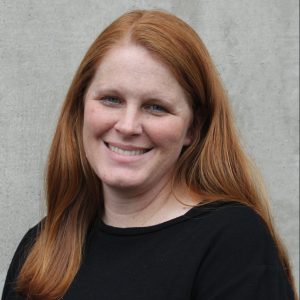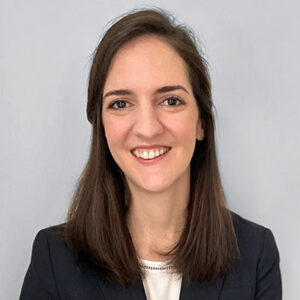
Before students master the art of crafting the perfect nut graf or developing an effective strategic social media campaign, they often find something just as important: community. This past fall, professors Karyn Riddle and Kathryn McGarr ensured that even first-year students outside of the School of Journalism and Mass Communication experienced that sense of connection through two newly created courses designed to make a sprawling campus feel a little smaller.
Introducing SJMC Early: Two New Courses for First Year-Students
The new courses, “Children and Media” and “History of Women in U.S. Media,” welcome first-year students into the SJMC community before they apply to the school or go on to other majors. Riddle and McGarr spent months designing courses that would not only introduce core journalism and mass communication concepts, but also foster an inclusive, tight-knit classroom culture.

The SJMC offers a wide range of 100-level courses to introduce key concepts to first-year or undecided students and hopefully persuade them to apply to the journalism major. However, these larger introductory courses lack one of the school’s main benefits – community. First-Year Interest Groups (FIGs) and honors courses, like Riddle and McGarr’s, help to fill that gap and increase awareness of the school. FIGs and honors courses offer students the opportunity for hands-on learning and strong community building, two elements of a class that are not often explored until later in a student’s degree path.
“Being in a First-Year Interest Group is a really great starting place as a freshman, especially for people who don’t really know exactly what they want to do,” said Gwen Cushman, a freshman in Riddle’s Children and Media FIG. “It’s a great way to explore topics and get three different perspectives on them. I think everybody should try it out.”
A Closer Look at First-Year Interest Groups
A FIG is a small cohort of first-semester students who enroll in three courses centered around one overarching topic. FIGs offer students a unique experience that is not always available at a large university: small class sizes, extra attention from instructors and the holistic understanding of a topic through overlapping classes.
Riddle’s 15-person class focused on how children select media, the purpose behind their selections and how it impacts them. The benefits of Riddle’s FIG started to emerge even before the first words of lecture.
“It was unlike any first day I’d ever experienced before. This group came in and made sure before the bell even rang, they had all introduced themselves to each other and said where they were from,” Riddle said. “It’s about the nature of the students who are drawn to a FIG, but also the nature of the FIG. They expect that this experience is going to be a social community. They went in there prepared to build that, not prepared to be in their own little silo world. It just really set off the tone for a really great semester, people that are engaged and want to talk and want to get to know one another.”
Honors Courses Provide Depth, Connection and Academic Rigor
Honors courses have similar offerings to FIGs: small classes that lead to strong community, close relationships with professors and peers, and a deepened understanding of material.
McGarr’s honors course examines women reporters and journalists and women as producers of media. It is only open to honors students and is taught like a graduate seminar. The group of 19 students meet once per week for two and a half hours, break into small discussion groups, come back together and dive deep into the assigned readings.
Beyond the Major: Connecting Non-Journalism Students to SJMC
The development of Riddle and McGarr’s courses allowed for the community in the SJMC to reach students beyond the degree.
“A lot of my students have already decided on their major, but they may not have known that they would enjoy taking journalism classes,” McGarr said. “I think only two of the 19 students are in the SJMC, so new course development is important for getting the word out to other parts of the university.”
McGarr hopes her honors course provides students a glimpse into the strong community found within the SJMC. Her student, freshman SJMC student Julia Walkowicz, confirmed the community building happening in class.

“It’s a long class because it’s only once a week, so there’s definitely a bond,” Walkowicz said. “Everybody’s really nice and we’re able to build off of each other’s ideas really well.”
Laying the Foundation for Student Success and Department Growth
Cushman, who plans to earn her degree in elementary education, knew the FIG would be perfect for her since it combined her two major interests. She was surprised to find such a strong community within a large university.
“The atmosphere was great in the class. Since we shared three classes, we all got to know each other pretty well and made friends,” Cushman said. “It was really easy to participate, share, and discuss with the class because we all were learning the same thing.”
For many first-year and honors students, Riddle and McGarr’s courses are their first introduction to the SJMC. FIGs and honors courses attract high-level students who want to engage with their learning materials, classmates and instructors. Connecting those students with the SJMC, can produce massive benefits for the department, greater university and the students themselves.
“Getting that small community with a high level of professor-student contact, high quality of feedback and attention from a professor contributes to the success of students as they progress through their college career,” Riddle said. “If we do recruit those students into the SJMC, that’s great. They’re a highly motivated, high performing group of students that have built a community that connects them to the university and hopefully our department at some point.”
Building on the strong momentum from this year, Riddle and McGarr are already exploring new ways to deepen the impact of their teaching. With plans to continue offering and evolving these first-year experiences, the SJMC is embedding community into its very foundation, not just for admitted majors, but for every student interested in journalism and mass communication.